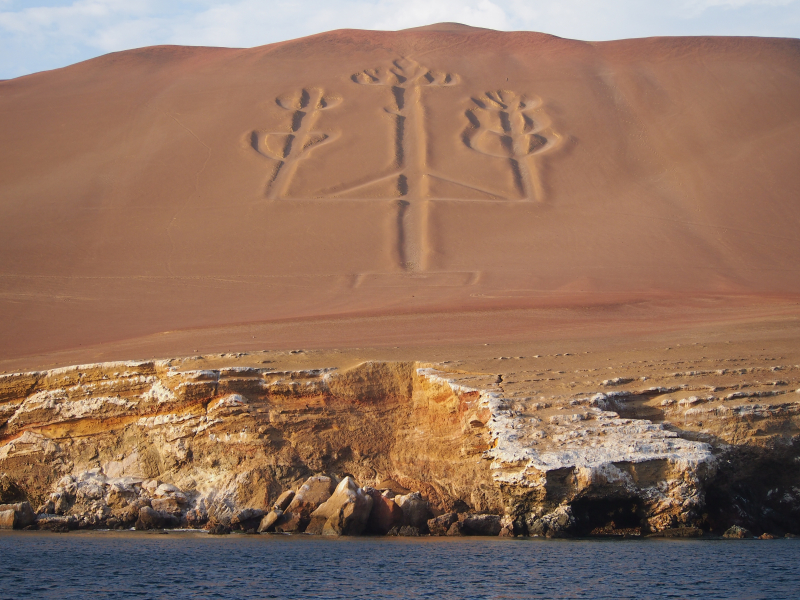Paracas Candelabra in Peru

Paracas Candelabra is one of the most Remarkable Geoglyphs. Although the Nazca Lines are the most well-known geoglyphs in the world, they are not the only ones in Peru or even the Nazca region. Paracas Candelabra is a big image that looks like a trident with curly, almost cactus-like extensions sprouting from it. The geoglyph is 595 to 800 feet long, carved into the side of a hill at an average depth of two feet, and may be seen for up to 12 miles out to sea. The geoglyph was created around 200 B.C.E., according to radiocarbon dating.
What the Candelabra represents is debatable. Some archaeologists believe it represents one of South America's gods, while others say it represents Jimson Weed, a hallucinogenic plant. Residents of the Paracas region are supposed to have traveled up the coast to what is now California in ancient times to collect the weed.
Some inhabitants believe the Candelabra is a three-pronged candlestick holder or a cactus. Still, the area has long been a port for seafaring passengers, and some speculate that one of those sailors may have carved the Candelabras into the side of the hill during a layover, but no one is positive.
Location: the Paracas Peninsula at Pisco Bay in Peru
Date: N/a










